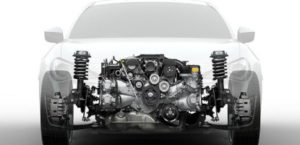The 4.7-liter V8 Jeep EVC or PowerTech High Output engine was assembled from 2002 to 2008 and was installed on the Grand Cherokee SUV and for a very short time on Ram or Dakota pickups. The motor differed from its counterpart not only in greater power, but also in the presence of a knock sensor.
The PowerTech series also includes internal combustion engines: EKG, EVA and EVE.
The engine was installed on:
- Dodge Dakota 3 (ND) in 2007 – 2008;
- Dodge Ram 3 (DT) in 2007 – 2008;
- Jeep Grand Cherokee 2 (WJ) in 2002 – 2004;
- Jeep Grand Cherokee 3 (WK) in 2007 – 2008.
Specifications
| Production years | 2002-2008 |
| Displacement, cc | 4701 |
| Fuel system | injector |
| Power output, hp | 255 – 265 |
| Torque output, Nm | 420 – 450 |
| Cylinder block | cast iron V8 |
| Block head | aluminum 16v |
| Cylinder bore, mm | 93 |
| Piston stroke, mm | 86.5 |
| Compression ratio | 9.7 |
| Features | SOHC |
| Hydraulic lifters | yes |
| Timing drive | chain |
| Phase regulator | no |
| Turbocharging | no |
| Recommended engine oil | 5W-30 |
| Engine oil capacity, liter | 5.7 |
| Fuel type | petrol |
| Euro standards | EURO 3/4 |
| Fuel consumption, L/100 km (for Jeep Grand Cherokee 2002) — city — highway — combined |
22.3 12.0 15.0 |
| Engine lifespan, km | ~300 000 |
Disadvantages of the EVC engine
- The engine requires specific oils or its narrow oil passages will become clogged;
- Also, due to the wrong choice of lubricant, hydraulic lifters often stick here;
- Significantly less often, but periodically there is a loss of valve seats;
- Timing consists of three chains with a resource of 200 thousand km;
- But your main expenses will be associated with excessively high fuel consumption.






